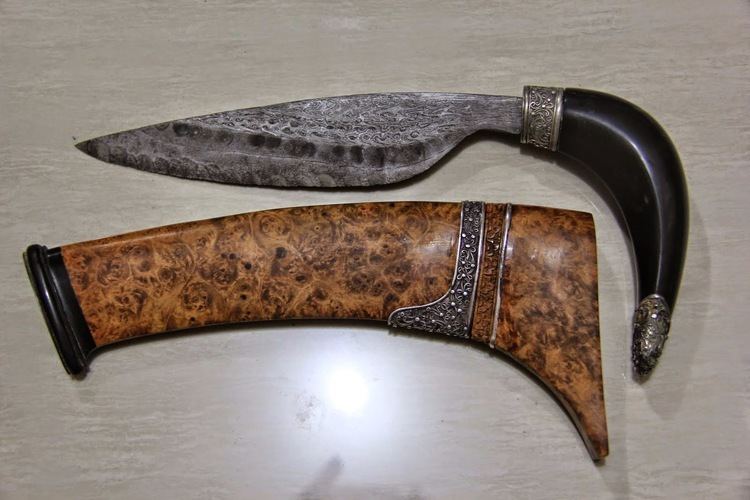Type Knife, Dagger Length 20–30 cm | Hilt type Wood, horn, ivory | |
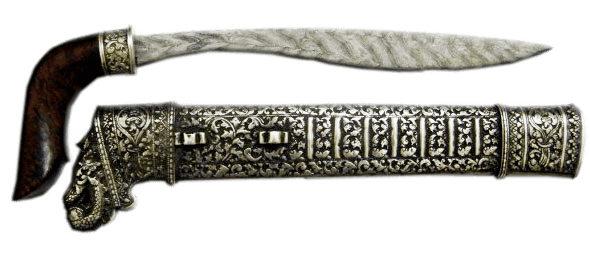 | ||
Blade type Single edge, convex grind | ||
The badik or badek is a knife or dagger developed by the Bugis and Makassar people of southern Sulawesi, Indonesia. It is sometimes referred to as a butterfly knife due to its shape, but not to be confused with the Chinese or Filipino butterfly knives.
Contents
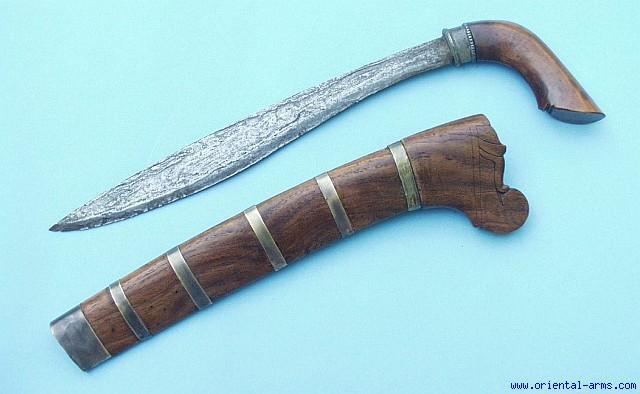
Description
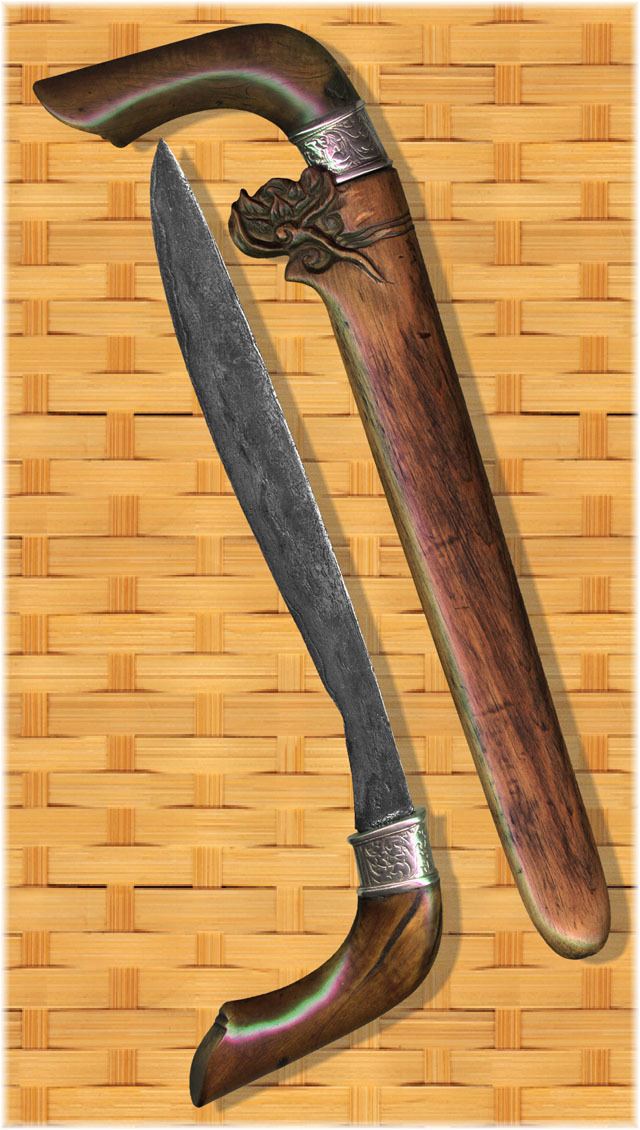
The badik consists of three parts, namely the handle and blade, as well as the sheath or scabbard. It comes in a great variety of shapes and sizes. The badik can have a straight, curved, bulbous or wavy, single- or double-edged blade. The blade is smooth or with hollow sections (fullered). The point of the blade can be either pointed or rounded. Like the kris, the shape of the blade is asymmetric and often shows patterns typical of pamor (pattern welding steel commonly known as Damascus steel). However, it differs from the kris in that the badik does not have a ganja (a buffer strip steel). Some versions from Sulawesi are decorated with inlaid gold figure on the blade called jeko. The handle is made of wood, horn or ivory in a shape of a pistol grip at a 45° to 90° angle or similar in a bent shape often decorated with carvings. From its native Sulawesi, the badik soon spread to neighbouring islands like Java, Borneo, Sumatra and as far as the Malay Peninsula, creating a wide variety of badik according to each region and ethnic group. There are many versions made and used throughout the Indonesian archipelago alone.
Culture
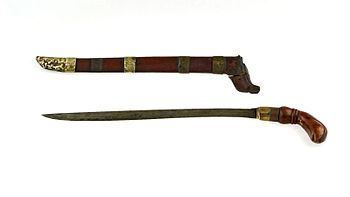
As with other blades in the Malay Archipelago, traditionally-made badik are believed to be imbued with a supernatural force during the time of their forging. The pamor in particular is said to affect its owner, bringing either well-being and prosperity or misfortune and poverty. Aside from being used as a weapon and hunting tool, the badik is a symbol of cultural identity in Sulawesi. As recently as the 1960s, the badik was worn as part of daily attire and badik crimes were reported regularly. In the colonial era, it was considered a pity if a man died without his badik. The Bugis and Makassar people still carry badik on ceremonial occasions today. The badik is worn on the right side, butt end of the handle pointing to the rear; it may also be positioned at their left side providing the butt end of the handle points to the rear. When the weapon is shifted from the right to the left side, or when worn at the left, handle reversed facing forward, it is signatory of impending combat.
Techniques

The badik is the main weapon in Bugis and Mangkasara styles of pencak silat. It is drawn by slashing from left to right, and then again from right to left if the first attack fails. The badik is primarily a thrusting weapon. The Bugis and sometimes the Makassar use a pinch-grip when holding the badik, with the fingers just below the point where the handle is attached to the blade. The Mangkasara badik has a broader blade compared to the thinner Bugis counterpart. As a result, Mangkasara fighting systems use flat-blade techniques so that the weapon can penetrate between the ribs.
Duels
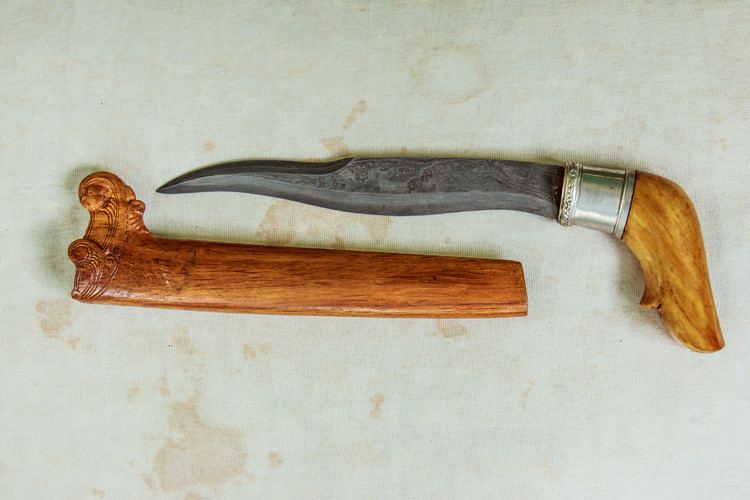
The traditional form of duelling among the Bugis-Makassar community was called sitobo lalang lipa in which the duellists fight in a sarong. The challenger stands with a loosened sarong around him and respectfully invites the other man to step into the sarong. The sarong itself is kept taut around both their waists. When both men are inside, an agreement to fight til death and thereafter shall be no hereditary grudge nor will any party be allowed to question the duel, shall be made. If both fighters agree, they then engage each other with badik within the confined space of a single sarong. Because avoiding injury is near-impossible even for the victor, this type of duel was considered a sign of extraordinary bravery, masculinity and the warrior mentality. Although true sitobo lalang lipa are no longer practiced, enactments of these duels are still performed at cultural shows today.
